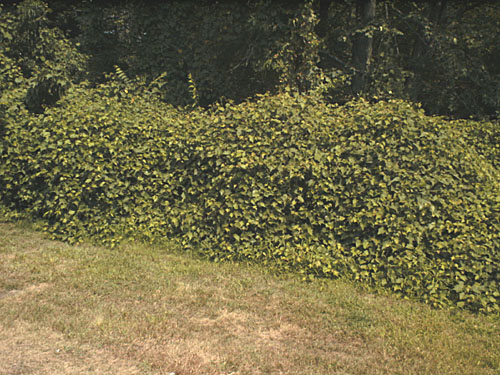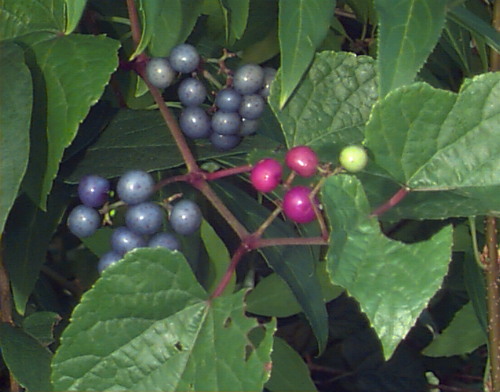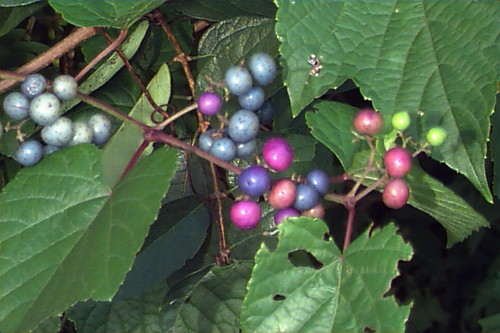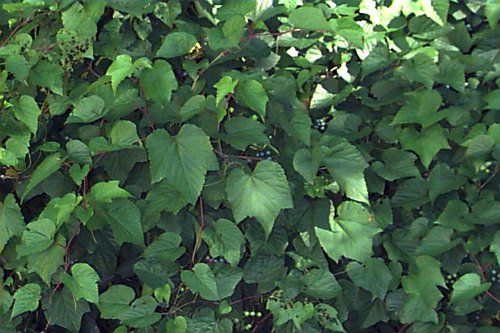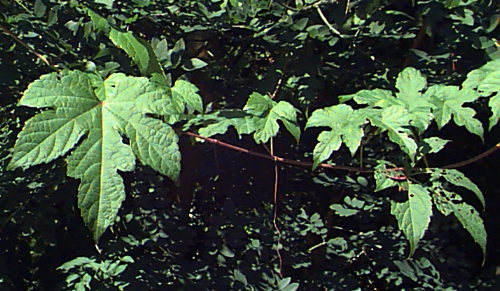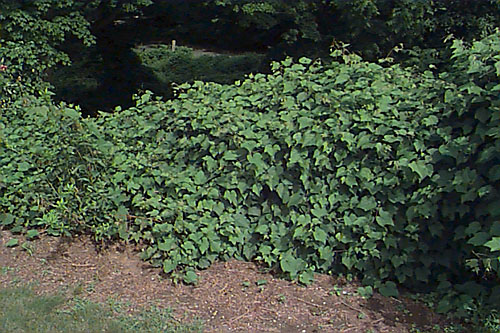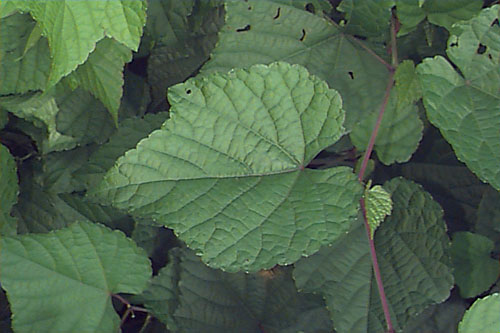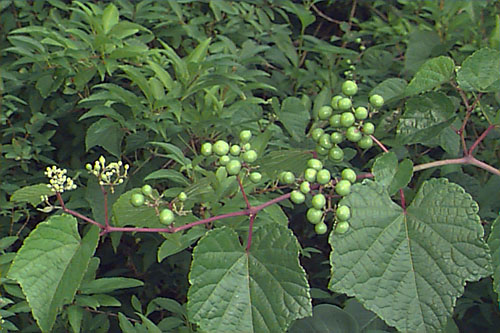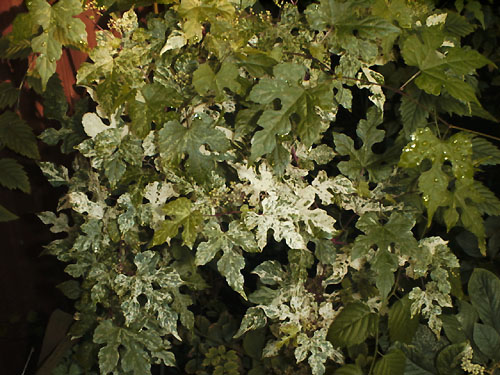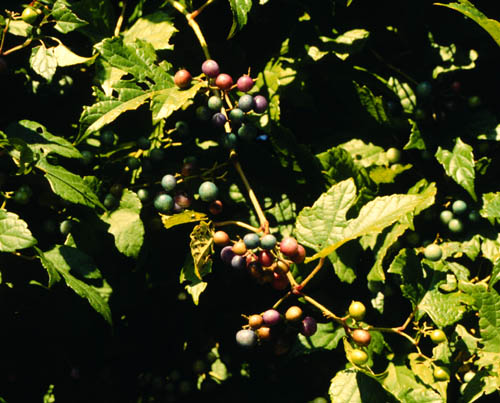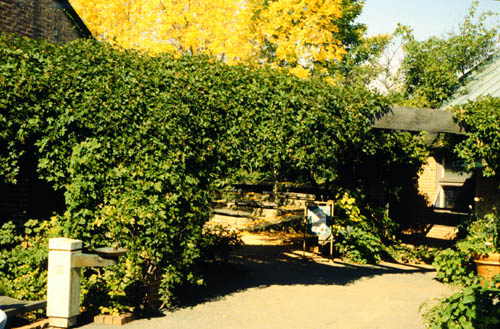Ampelopsis brevipedunculosa
Porcelain Berry, Porcelain Ampelopsis
Vitaceae
ExpandHabitat
- native to China and Japan
- hardy to zone 4
- Special Note: This species has demonstrated an invasive tendency in Connecticut, meaning it may escape from cultivation and naturalize in minimally managed areas. For more information, .
Habit and Form
- a deciduous vine
- vigorous
- tendrils
- 10' to 15' tall
- medium texture
- fast growth rate
Summer Foliage
- alternate leaf arrangement
- simple, deciduous leaves
- 2.5' to 5" long
- lobed with a cordate leaf base
- serrated
- pubescent petioles
- dark green leaf color
Autumn Foliage
- no fall color
Flowers
- no ornamental value
- green flowers
Fruit
- metallic, blue berry
- 0.25" to 0.33" long
- very showy
- ripens in September
Bark
- pubescent stems when young
- brown, thin stems
Culture
- transplants readily
- full sun
- needs support
Landscape Uses
- for fruit
- to cover fence or trellis
- for quick cover
Liabilities
- Japanese Beetles
- rampant
ID Features
- subglobose, brownish buds
- vigorous, deciduous vine
- blue berry fruit
- tendrils
- lobed leaf with cordate leaf base
- serrated leaf margins
Propagation
- by seed
- by cuttings
Cultivars/Varieties
'Elegans' - A cultivar with smaller dissected leaves that display irregular white variegation, this plant is less vigorous than the species. The variegated plant can be produced from seed and is very popular in the trade.
var. maximowiczii - This variety has leaves that are more deeply lobed than the species. It exhibits the same vigorous growth as the species.
